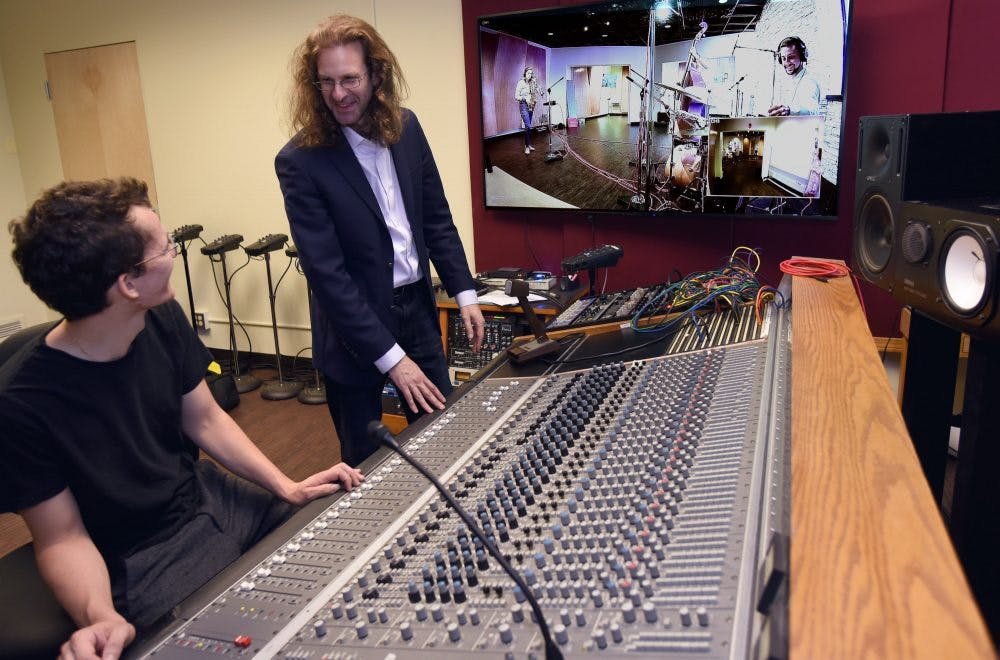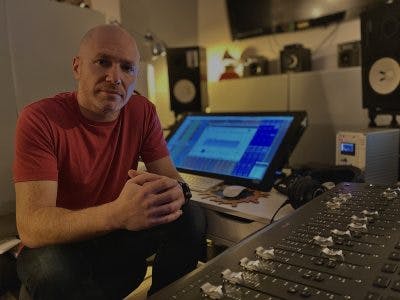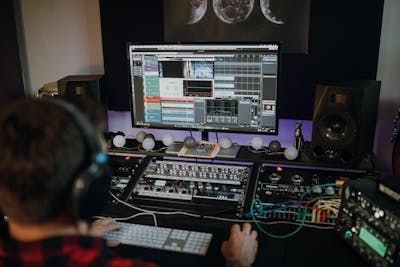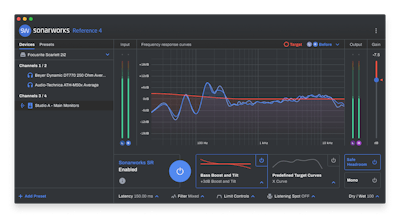Middle Tennessee State University, University of Hartford, Pyramind and Conservatory of Recording Arts and Sciences among early adopters of Reference 4, ensuring that mixes ‘translate’ for students and educators
New York, NY, October 8, 2019 — As audio engineering and music technology programs across the United States begin to experience unprecedented growth, audio innovators Sonarworks [AES booth 313] have addressed a pressing need that faces virtually all students, educators and audio curriculums: accurate audio translation. With a plethora of quality speakers and headphones on the market, as well as listening environments of vastly different sizes, materials and dimensions, Sonarworks’ Reference 4 software is able to digitally calibrate audio signals so they remain accurate and remove unwanted sonic coloration — regardless of the audio source or listening environment.

Post-secondary institutions all across the country have begun working with Sonarworks to make use of its groundbreaking software to calibrate a variety of listening environments — from large mix facilities, to medium-sized MIDI labs to smaller editing facilities. Some of the renowned education institutions already using Sonarworks Reference software include Conservatory for Recording Arts & Sciences (CRAS), Crē•8 Music Academy, IO Music Academy, Middle Tennessee State University, University of Hartford and many others.
At the University of Hartford’s Hartt School, all incoming Music Production & Technology freshmen are required to download Reference 4 on their laptops — virtually ensuring that students and professors are hearing ‘the same thing’ without unwanted coloration or frequency variations resulting from variances in the room, speaker or headphones. Further, audio calibration is being integrated into the curricula, with room calibration and accurate monitoring being addressed as one of the very first steps in a student’s audio education.
A ‘single source’ education solution
To meet the growing demand for further educational support,Sonarworks has introduced a partnership initiative to integrate into audio programs and curriculums. The initiative consists of items including product discounts of up to 40 percent for verified education purchases, multi-user licenses for student accounts, and sponsorships for student competitions. Further, Sonarworks is able to help colleges and universities affordably integrate its calibration technology into academic curriculums — helping students learn their own systems while gaining an understanding of the principles of accurate monitoring.

Sonarworks Reference 4 delivers the same accurate studio reference sound on all speakers and headphones, ensuring a consistent monitoring experience.
Importantly, since laptops are now a ubiquitous tool for students, the new program provides significant discounts for institutions that want to have Reference 4 installed on their students’ computers. This means that whether a student is making edits in their dorm room on nearfield monitors or mixing on a train with a pair of headphones, they can rest assured that their audio is properly calibrated to their professors, and that their mixes will translate.
The Hartt School at The University of Hartford offers a Bachelor of Music in Music Production & Technology, and has recently invested over a $250,000 in new facilities — including a brand new live room. The University, which is routinely churning out tomorrow’s producers, engineers and audio post-production engineers, is proud to be on the cutting edge of technology. “My colleagues and I are always on the lookout for opportunities to integrate new technology that can improve the student experience and elevate our pedagogy,” says Gabe Herman, Assistant Professor, Music Industry, The Hartt School, University of Hartford. “Over the last year, our decision to add Sonarworks into our curriculum and studio facilities has dramatically improved the quality of instruction and augmented our teaching experience in unexpected ways. By using this software, a teacher can assign a project with confidence that every student has equal access to the same basic listening environment and equipment.”
Removing doubt, adding confidence
Sonarworks Reference 4 delivers the same accurate studio reference sound on all speakers and headphones, ensuring a consistent monitoring experience. “When you hear something in a session, you have to ask yourself if the room is making me hear this, or if it really exists in the recording or the source material?” observes Herman. “For decades, engineers of all kinds have had this issue — even in some of the nicest studios in the world where you have to check your mixes elsewhere to make sure that what you are reacting to in the source material is really there and not an anomaly of the acoustic environment.”
Students often find themselves working in acoustical spaces that are far from ideal, such as dorms, even in campus libraries or coffee shops with uncalibrated headphones. “If I give a student an assignment and they go home to their dorm room and do their homework, they may be making all the right choices in their own listening environment,” Herman says. “But when they come back to the recording studio the next day to play back their work in class, it doesn’t sound right — and they may not have done anything wrong. It is an issue of translatability. What Sonarworks helps us do is level the playing field so we can have a common listening experience — and this helps students’ confidence in their work and in their choices.”
For more information on Sonarworks, please visit https://www.sonarworks.com.




